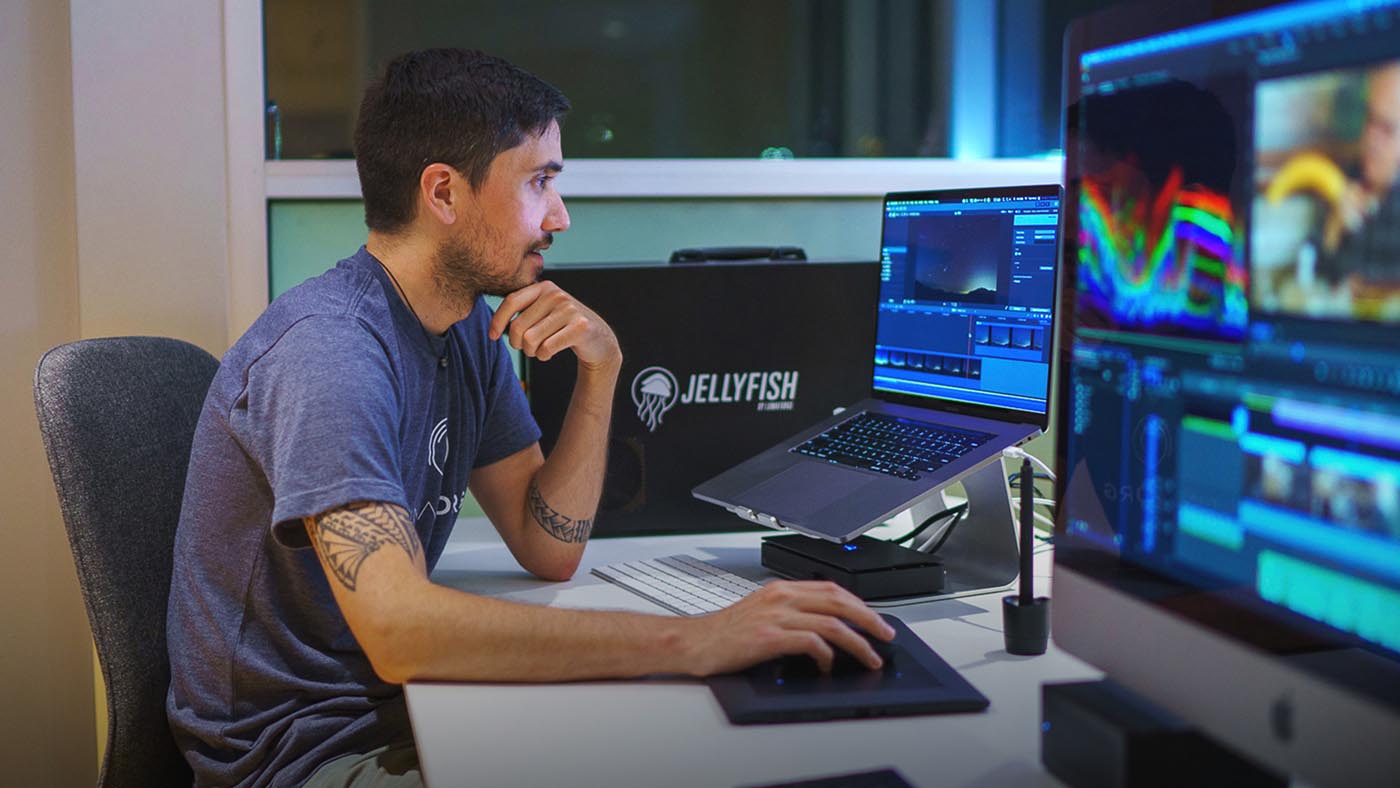Okay, this may seem like an odd topic to focus on, but I can’t count the number of times I’ve seen cringe-worthy placement of servers, hard drives, and computers. There are a few simple rules to keep in mind when it comes to the placement of your sensitive electronics. Following these strategies can help extend the life of your equipment and help keep your data safe.
Ergonomics and aesthetics are important to creative people, but physics is important too. Let’s first identify the enemies and then look at strategies to defeat them.
Enemy of the state
- Dust, debris, pet fur, etc.
- Vibrations and impacts
- Unreliable power
- Liquids
- Heat
A mighty wind
While SSDs use passive cooling, any high-performance multi-drive system like ThunderBay and Jellyfish uses active cooling. This means they use fans that suck in air to blow past the components to keep them cool. If your Jellyfish is sitting on a dirty floor, it will suck up clumps of dust, dirt, or anything else present. It’s gross yes, and not great for the life of your system either. This applies to any device with active cooling such as a tower-style workstation.
Gravity
It doesn’t take Sir Isaac Newton to figure out that something teetering on the edge of a desk is at risk of falling. Couple this placement with lazy cable routing and you’re one small trip away from your hard drive taking a tumble. In case you didn’t know, hard drives don’t like to be dropped.
Absolute power
Electricity seems ubiquitous, but blackouts and brownouts do happen everywhere and in some places more than others. Power conditioners and battery backup systems are really smart choices to protect your equipment from the damage that can occur when you lose power mid-operation. Calculate the total power draw of the devices you need to keep safe and implement a battery backup system that can keep your gear powered up at least long enough for a safe shut down.
The life aquatic
Some SSDs like the Envoy Pro are water-resistant, but Jellyfish and ThunderBay do not like liquids. If you edit with a coffee cup within arm’s reach at all times, be sure you keep your sensitive gear as far from the coffee as possible.
The heat
Airflow is the key to keeping your devices from overheating. Don’t block the intake or exhaust vents. If you work in a hot climate, make sure the room is climate controlled and not sitting in direct sunlight.
Considering all of these threats, it’s no surprise that professionals use a ventilated equipment rack with integrated UPS power and climate control. If that is an option for your Jellyfish Equipment, we highly recommend it, but if you need to place your equipment closer to your workstations, there are still ways to protect your gear. So before you hide that “ugly” black box away in a dusty corner behind your desk, keep in mind these strategies to keep your investment operational for years to come.
Header image by Redd on Unsplash






